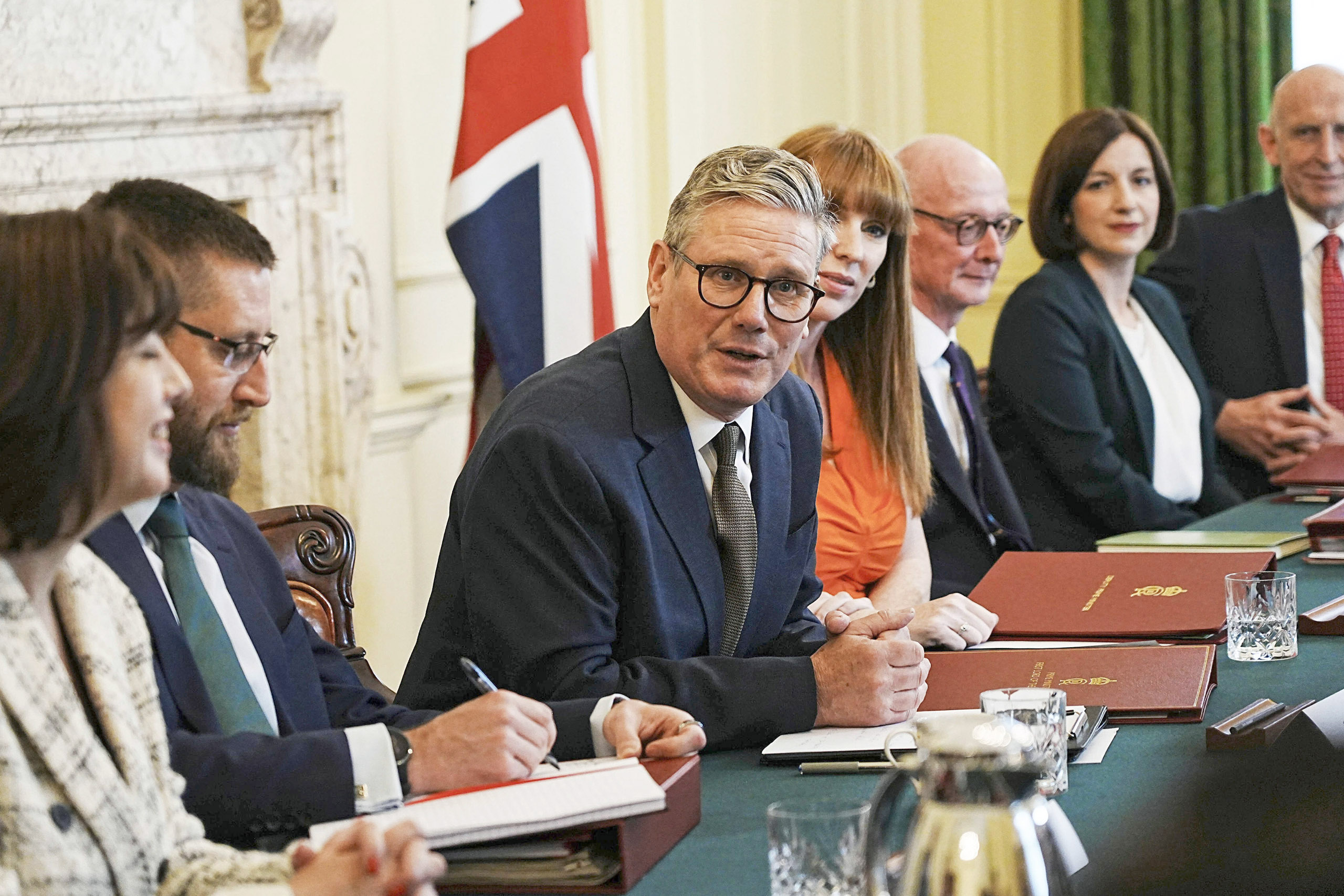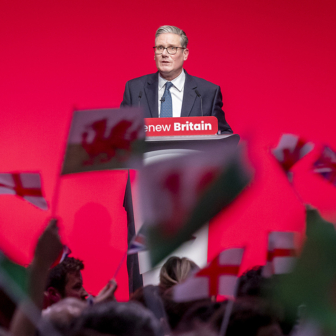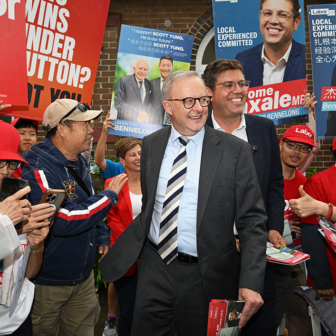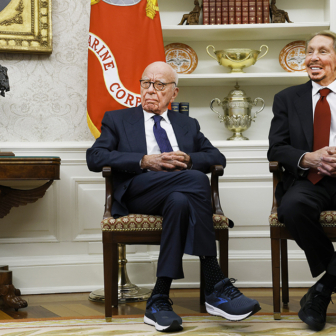Just a week ago the far right appeared to be on the march across Europe. In the first round of voting for the French parliament, Marine Le Pen’s anti-Muslim National Rally secured top place, above both president Emmanuel Macron’s centrist grouping and an alliance of left-wing parties. Avowed racists were among the members of a new Dutch government installed during the week. Last month’s elections to the European parliament saw ethno-nationalist parties make big gains in Germany and elsewhere.
This weekend the tide seemed to have turned. The second round of voting in France produced an unexpected victory for the left alliance, with Le Pen’s party coming third. And in Britain, Labour was celebrating a landslide election win.
The scale of Labour’s success can hardly be exaggerated. Of 650 seats in the House of Commons, Labour now has 412, with an overall majority of 174. The Conservatives have been reduced from 372 seats to 121, their fewest ever. Just five years ago Labour collapsed to its lowest seat total, 201, since 1935. It now has its second-highest ever, exceeded only by Tony Blair’s 1997 victory. (He won 418 seats and a majority of 179.)
How did this happen? There are two different kinds of answer.
The first is straightforward. After fourteen years in government, after the chaos of Brexit, Boris Johnson and five prime ministers in seven years, the public wanted the Tories out. The polls settled eighteen months ago into a fifteen- to twenty-point lead for Labour, and refused to budge. When Rishi Sunak called the election the Tories were on 23 per cent. After a six-week campaign their share of the final vote was 24 per cent.
The second reason is Britain’s first-past-the-post voting system, which gives the seat to the candidate with the highest number of votes in each constituency. This can lead to huge disproportionalities between votes won and seats gained.
Labour’s landslide was achieved with just 34 per cent of the national vote: only one point more than it got in 2019, when it won fewer than half the number of seats and fell to a crushing defeat. The difference lies entirely in the collapse of Conservative support. In 2019 the Tories’ vote share of 44 per cent bagged them 365 seats. Their near-halving in support this time round translated into the loss of over two-thirds of these.
The Conservatives were undone by a highly efficient pincer movement. Attacking its right flank was Reform UK, the latest incarnation of the UK Independence Party and the Brexit Party, whose relentless exploitation of anti-European and anti-immigrant grievance catalysed the 2016 referendum vote to leave the European Union. Under its populist leader Nigel Farage, Reform picked up 14 per cent of the national vote. This only translated into five seats — including one for Farage, at his eighth time of asking — but by splitting the conservative vote in a swathe of leave-voting constituencies in the midlands and north of England it provided Labour with around 150 gains.
On the Conservatives’ left flank, meanwhile, the centrist Liberal Democrats focused their campaigning on Tory constituencies in the south of England, many of which had voted against Brexit, and won seventy-one of them. In these seats the Labour vote was negligible, indicating widespread “tactical” voting to oust the Tories.
In the cities, Liberal Democrats returned the favour, lending their votes to Labour. The result is that (beyond outer London) there is now not a single Conservative seat in any major British urban area. There are none in Wales, and only five in Scotland. In the latter, the big shock was the collapse of the Scottish Nationalist vote: the party that still runs the Scottish government lost thirty-nine of its forty-eight Westminster seats, almost all of them to Labour.
The first past the post system threw up two other remarkable outcomes. With the overall result a foregone conclusion, many people felt empowered to vote for minor parties. The Green Party won four seats, quadrupling its representation in parliament, and five Labour candidates were defeated by independents — including the party’s former left-wing leader Jeremy Corbyn — standing on pro-Palestinian platforms against Labour’s perceived stance on Gaza.
This all resulted in a remarkable election night. Every ten minutes or so the coverage was punctuated by the sight of another Conservative cabinet minister or MP losing their seat, sparking cheers among Labour supporters gathered across the country. The loudest celebration was saved for Liz Truss, whose disastrous forty-nine-day premiership in 2022 drove the final nail into the coffin of the Tories’ electoral chances. Having subsequently tried to resurrect her career by founding a populist political grouping and publishing a book entitled Ten Years to Save the West, Truss was ousted from her constituency in Eastern England by a record-breaking twenty-six-point swing to Labour. As one wag gleefully put it, Truss could not even save South West Norfolk, let alone the West.
The British system of transferring power is swift. Rishi Sunak conceded defeat in the early hours of Friday morning, and went to Buckingham Palace at around 11am to tell King Charles. A few minutes later the monarch received Labour leader Sir Keir Starmer and asked him to form a government. By midday Sunak had departed 10 Downing Street and Starmer had moved in.
Starmer lost no time in putting his stamp on the new government. Graciously acknowledging Sunak’s achievement in becoming the UK’s first British-Asian prime minister, he nevertheless made it clear that Labour would be very different from the Tories in office.
“Public service is a privilege,” he said, “and your government should treat every single person in this country with respect… From now on you have a government unburdened by doctrine, guided only by the determination to serve your interest… [Y]ou have given us a clear mandate and we will use it to deliver change: to restore service and respect to politics, end the era of noisy performance, tread more lightly on your lives and unite our country.”
Commentators noticed immediately how relaxed and confident Starmer seemed. A stiff and rather stilted speaker when campaigning, he appeared to inhabit his new office with ease. At a press conference on Saturday morning after chairing his first cabinet meeting, Starmer looked thoroughly in command. As several people noted, this is not his first management job: he spent five years running the Crown Prosecution Service before becoming an MP. A technocrat rather than an ideologue, Starmer set out his plans as if chief executive of the company. They would be exactly as advertised in the campaign.
If Starmer looked at home in his new role, his cabinet looked like the country they will serve. Gone are the public schoolboys and second-job moonlighters of the Tory years. Ninety-two per cent of Labour’s cabinet were educated at comprehensive state schools. Half of them are women. In Rachel Reeves the UK has its first female chancellor of the exchequer, or treasurer; in David Lammy a Black foreign secretary. Deputy prime minister Angela Rayner was a teenage mother who left school at sixteen and worked as a carer before becoming a trade union official.
In his press conference Starmer warned that, though his government would immediately get to work on the task of “national renewal,” the public should not expect everything to change overnight. Undoing the damage of Tory rule, as he had emphasised during the campaign, would take ten years.
The challenge his government faces is making enough progress in the first five of these to be re-elected next time round. He will have a lot of marginal seats to defend. And he doesn’t just have to clear up the Tory legacy of austerity and Brexit. He must somehow reform a British economic model which has been underperforming in critical ways for forty years.
Over the past two years, Starmer and Reeves have insisted that Labour would not spend its way out of trouble. With national debt at close to 100 per cent of GDP, the tax take at a seventy-year high and borrowing costs still at their elevated post-Truss level, Labour tied itself to an ultra-orthodox set of fiscal rules. Despite collapsing public services and rising child poverty, it insisted that spending will be tightly controlled and working people’s taxes will not be raised.
There will be no resource bonanza for the National Health Service to cut waiting times for the more than six million people now on its non-urgent operation list. There will be no mass rescue of local authorities and universities heading for bankruptcy; no major influx of money to employ more teachers or police officers or sort the backlog in the courts; no big pay rises for public sector workers — including doctors and nurses — who have been on strike. With just a few exceptions, the government will only meet the demands for higher spending when economic growth allows.
Labour’s priority, the new prime minister insisted again in his press conference, was creating wealth. Only that would allow them to spend it.
But restoring economic growth will not be easy. Since the financial crash of 2008, Britain’s growth rate has averaged 1.3 per cent, the lowest of any G7 country. Last year it grew just 0.1 per cent, and the IMF forecast is for 1.5 per cent in 2025. Annual productivity growth has been just 0.5 per cent, much less than in the United States, France or Germany.
The core problems are easily identified. Investment, both public and private, has been consistently and significantly lower than in similar economies for several decades. And Brexit has reduced the overall level of GDP, economists estimate, by somewhere between 4 and 8 per cent, with both exports and imports down 15 per cent.
The British economy is good at creating jobs — 74 per cent of working age adults are in employment — but many of them are insecure and low-waged. Almost a million people are now on “zero-hours” contracts, unsure how many hours they will work each week. Around 15 per cent of the labour force is notionally self-employed, though many of those are in practice contracted employees without full employment rights. Around a million people of working age (22 per cent of the labour force) are now economically inactive, most of them due to sickness and disability.
Despite all the anti-migrant rhetoric of the Conservative government, high vacancy rates have drawn in migrant labour in record numbers: net inward migration was 685,000 last year. With a rapidly ageing population, migration is likely to continue at high rates. Yet a tight labour market has not reduced poverty: 11 per cent of workers, and 4.3 million children, live in a household in poverty. Last year 3 per cent of all Britons used a charitable food bank.
In a small number of economic sectors — finance, professional services, aerospace, life sciences, the creative industries — Britain remains a global powerhouse. But wealth is concentrated around London and the southeast: in every other part of the country, productivity is below the national average. The economy runs a persistent trade deficit, made possible only by capital inflows through which foreigners buy up the most desirable businesses and property.
Over-concentrated in lending overseas and for real estate, British banks and pension funds are notoriously loathe to invest in British firms, the most successful of which regularly get bought out and/or move to America. British capitalism has become almost as fond of share buybacks as its American cousin: supported by the Bank of England’s money-creating “quantitative easing” program, the stock market and property market have boomed over the past decade, making shareholders and homeowners unprecedently wealthy even as wages and salaries have stagnated. Real average household incomes are lower today than in 2007.
So the British economic model has deep structural flaws. Yet from this relatively unproductive and deeply unequal base, the British political system and its public expect to have European-style public services while refusing to pay European levels of tax. There is much gnashing of teeth in the media at the 37 per cent share of national income now taken in tax, but this compares with more than 42 per cent in most European economies.
This is the economic legacy Keir Starmer and his chancellor Rachel Reeves are now inheriting. In reality, it has been bequeathed as much by the last Labour government as the more recent Tory one — though the latter alone is responsible for Brexit. From 1997–2008 the New Labour governments of Tony Blair and Gordon Brown benefited from a decade of booming globalisation, the information technology revolution and unsustainable debt; but they did not much reform the underlying British economic model. The question now is whether the even newer Labour government of Starmer and Reeves can do so.
And herein lies the paradox for Britain’s new rulers. To win power Labour has presented a determinedly conservative economic face. Starmer went out of his way to distance himself from his predecessor Jeremy Corbyn’s radical policy stance — even going so far as to expel Corbyn from the Labour Party (for insufficient condemnation of anti-Semitism within the party.) He has continuously emphasised how much he has changed his party, stressing its new moderation. Indeed, Reeves has insisted, not only is Labour no longer the old bastion of high spending, taxation and borrowing, it is now the party of “sound money,” an ancient monetarist trope.
Growth will come, says Reeves, not from higher borrowing and taxation but from supply-side reforms. On the one hand, fiscal and monetary stability will encourage business investment; on the other, Labour will reform the planning system to unblock new infrastructure and housing. The new government also plans modest reform of the skills training system, an expanded childcare package to enable mothers (in particular) to return to work, and a rather ill-defined industrial policy, by which the state will co-invest with private capital in growing businesses and new technologies, especially green ones. A new publicly owned energy company will accelerate investment in renewable power and electricity storage to meet Britain’s net zero targets.
It’s possible that all this will work. During the recent years of instability many firms have said they have been holding off new investments; many will now be given the green light. There is certainly a lot of goodwill towards the new government from the business community. But planning reforms are notoriously difficult to get through a parliament of MPs whose constituents don’t want new building near their homes. Previous governments have many times tried to strengthen skills training without much success.
Even with Labour’s intended improvements to workers’ rights — alongside the expected (but gradual) impact of artificial intelligence — it will take an unprecedented effort to shift the economy towards a high-wage, high-productivity labour market. The present model serves too many businesses too well.
And there is no reason to think that either British or foreign capital will simply fall in behind the new government’s growth ambitions when there remain better prospects elsewhere. With both the United States and the European Union now embarked on high-spending industrial strategies aimed at the new green sectors and at reducing dependence on Chinese supply chains, Britain risks being left behind, an observer not a member of the new global economy’s most powerful blocs.
In his election night victory speech, Keir Starmer acknowledged the threat of the far right, in Britain and more widely. The only way of defeating it, he said, was for progressive governments to show that politics could deliver economic and social benefits for those left behind by globalisation and austerity. The ethno-nationalists were feeding off grievance, some of it justified. People had lost faith in politicians and governments and taken refuge in populist rhetoric based on conspiracy theory and xenophobia. The only answer was for governments to genuinely improve people’s lives. That was Labour’s mission.
It is a noble and practical goal. But the British economy’s longstanding structural weaknesses will make it a difficult one to achieve. Starmer and his new government therefore face a hard question. Given those weaknesses, will their modest policy prospectus generate sufficient economic growth to enable that goal to be met? And if it does not, are they willing to be bolder and more radical in policy than they have so far promised? •




